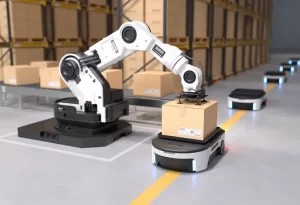Introduction: The Convergence of Connectivity and Intelligence
In a world where seamless mobility is no longer a luxury but an expectation, industries from logistics to telecommunications are racing to build infrastructures that blend speed, reliability, and intelligence. At the forefront of this transformation is H3C, a global leader in IT solutions, whose cutting-edge technologies are redefining how businesses and societies move—both physically and digitally. From autonomous warehouse systems to 5G-enabled smart cities, H3C’s innovations are not just illuminating the path forward; they are constructing it. This article explores how H3C’s integrated IT ecosystem is driving the future of mobility, turning theoretical potential into tangible progress.
The Backbone of Modern Mobility: H3C’s Network Infrastructure
At the core of H3C’s mobility solutions lies its next-generation networking architecture, designed to handle the explosive growth of data generated by connected devices. Key advancements include:
- 5G Edge Computing Platforms: H3C’s converged edge servers, such as the UniServer E3200 G5, process latency-sensitive tasks (e.g., autonomous vehicle decision-making) within milliseconds. For example, a European port authority reduced cargo-handling errors by 40% by deploying H3C’s edge nodes to analyze IoT sensor data from cranes in real time.
- AI-Driven Network Slicing: Customizable virtual networks allocate bandwidth dynamically. During the 2023 Shanghai Marathon, H3C’s slicing technology prioritized live-streaming traffic for 500,000 viewers while maintaining emergency communication channels for organizers.
- Unified Cloud-Native Fabric: Integrating data centers, clouds, and endpoints into a single management plane, this system enabled a Southeast Asian ride-hailing giant to cut server downtime by 60% during peak hours.

Intelligence in Motion: AI and Big Data at Scale
H3C’s mobility solutions transcend connectivity, embedding AI into every layer of operations:
- Predictive Fleet Management: By integrating H3C’s Machine Learning Platform (MLP) with telematics, a Chinese logistics firm achieved a 25% reduction in fuel costs. The system analyzes driver behavior, weather patterns, and traffic to optimize delivery routes.
- Smart Traffic Governance: In Jakarta, H3C’s City Brain platform processes feeds from 10,000+ cameras to predict congestion hotspots, adjusting traffic lights preemptively. Results: a 30% drop in rush-hour gridlock.
- Autonomous Drone Swarms: For agricultural mobility, H3C’s AI-powered drones map soil health across 1,000-acre farms, enabling targeted irrigation. A Kenyan cooperative reported a 50% increase in crop yields using this system.
Security: The Invisible Engine of Trust
Mobility’s future hinges on secure data flows. H3C addresses this through:
- Zero-Trust Architecture: Every device, user, and transaction is authenticated continuously. A Middle Eastern oil company used this framework to prevent 12,000+ intrusion attempts on its pipeline drones in 2023.
- Quantum-Safe Encryption: Prototype networks in partnership with Chinese research institutes are testing post-quantum algorithms to safeguard mobility data against future threats.
- Blockchain for Supply Chains: H3C’s Hyperchain platform ensures tamper-proof tracking of goods, slashing counterfeit incidents by 90% for a luxury automotive parts supplier.
Sustainability: Mobility with a Conscience
H3C’s green IT initiatives are reshaping mobility’s environmental footprint:
- Energy-Efficient Data Centers: Deploying liquid cooling and AI-driven power management, H3C’s facilities in Hangzhou operate at a PUE (Power Usage Effectiveness) of 1.15—30% lower than industry averages.
- E-Waste Reduction: Modular hardware designs allow 85% of components in H3C’s switches and routers to be reused or recycled.
- Smart Grid Integration: In Chile, H3C’s microgrid controllers balance EV charging station loads with renewable energy availability, cutting carbon emissions by 22,000 tons annually.
Case Study: Revolutionizing Urban Transit in Shenzhen
Shenzhen’s transport authority partnered with H3C to deploy an AIoT-powered mobility ecosystem:
- 5G-Connected Buses: Real-time diagnostics predict mechanical failures 48 hours in advance.
- Passenger Flow Analytics: AI cameras adjust metro schedules based on crowd density, reducing wait times by 35%.
- Integrated Payment Systems: Facial recognition and blockchain ensure seamless, fraud-free fares.
Outcome: Shenzhen became the first city to achieve a 98% public transit punctuality rate, setting a global benchmark.
Challenges and the Road Ahead
Despite breakthroughs, H3C faces hurdles:
- Regulatory Fragmentation: Differing data sovereignty laws complicate cross-border mobility projects.
- Skill Gaps: A shortage of AI-fluent network engineers slows deployment in emerging markets.
- Ethical AI: Balancing surveillance capabilities with privacy in smart city projects remains contentious.
To address these, H3C is investing $200 million in global training hubs and advocating for standardized IoT regulations through the UN’s ITU agency.

Leave a comment